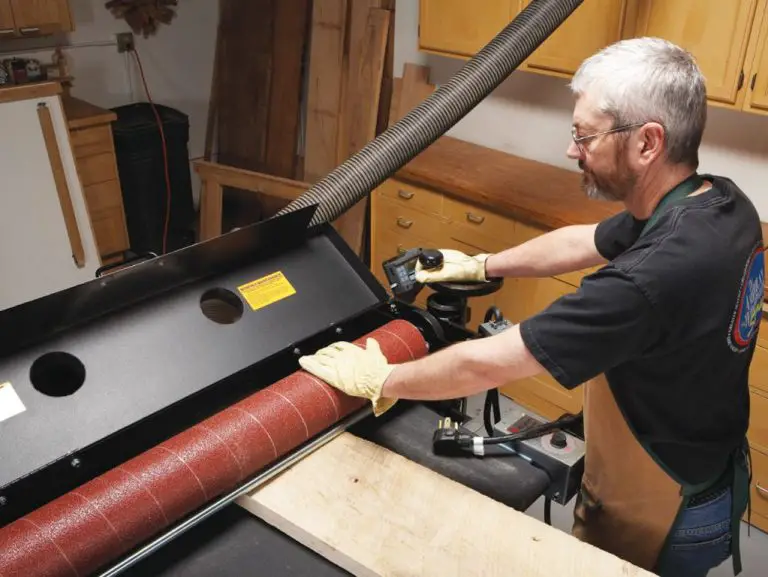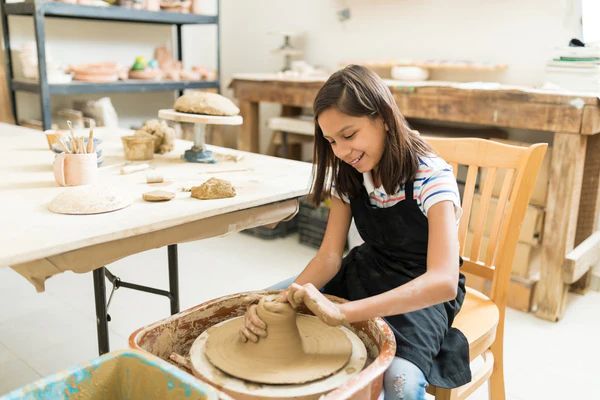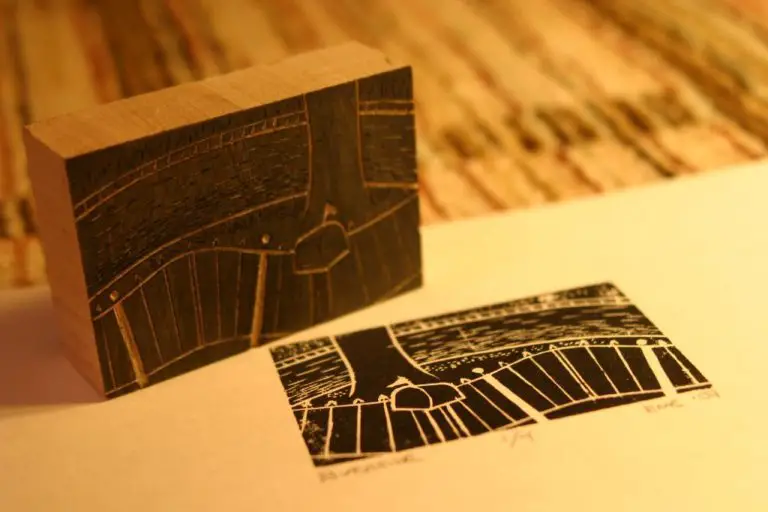Can A Clay Pot Be Used As A Fire Pit?
A fire pit is an outdoor recreational area designed to safely contain a fire. Fire pits allow people to enjoy the beauty and warmth of an open flame in their yard or patio. Common uses for fire pits include cooking food, providing light, and just enjoying the ambiance of an outdoor fire.
With the rising popularity of fire pits, some people look for creative alternatives to manufactured metal models. One unique option is using a simple clay pot or urn as a fire pit. Clay pots offer an inexpensive, environmentally-friendly way to make a basic fire pit with materials commonly found around the home.
Clay Pot Suitability
Clay is an ideal material for creating a fire pit due to its high heat resistance and durability. Most clay pots are fired at extremely high temperatures during the manufacturing process, making the finished product able to withstand repeated exposure to fire.
The chemical composition of clay contains minerals like silica and alumina that help resist heat damage. As a ceramic material, properly fired clay does not combust or melt when exposed directly to flames. This allows the shape and structural integrity of a clay pot to remain intact through many uses as a fire pit.
Unglazed terra cotta clay, in particular, excels in fire pit applications. The natural porosity of terra cotta allows steam and moisture to escape when heated, preventing cracks or explosions. Unglazed terra cotta also withstands thermal shock, so it won’t crack from rapid temperature changes like a glass or metal fire pit might.
In summary, the high firing temperature, mineral content, ceramic properties, and porosity of clay make it an ideal fire-resistant material for containing and insulating backyard fires safely.
Clay Pot Shapes and Sizes
Clay pots come in a variety of shapes and sizes that can work for fire pits. Some common shapes include:
- Round – These circular pots work well for containing a fire and allow heat to radiate in all directions.
- Oval – Oval pots provide more directional heat while still containing the fire on all sides.
- Square – Square pots contain the fire in a unique shape but can concentrate more heat in certain directions.
Small, medium, and large sizes are all suitable options for fire pits depending on your needs. Small pots work well for more intimate gatherings while larger sizes can accommodate bigger groups. The ideal size depends on factors like:
- Number of people – Bigger pots allow more people to gather around the fire.
- Amount of fuel – Larger pots fit bigger fires that require more wood or other fuel.
- Portability – Small pots are easier to move around a patio or campsite.
The shape also impacts heating efficiency. Round pots radiate heat 360 degrees. Square pots concentrate more heat in focused directions but less around the sides. Oval pots provide a mix of radiant and directional heating.
Preparing the Clay Pot
Before using a clay pot as a fire pit, it’s important to properly prepare it to ensure safe and effective use. There are two key steps when getting a clay pot ready to serve as a fire pit:
Cleaning and Seasoning the Clay Pot
Make sure to thoroughly clean the clay pot before its first use as a fire pit. Wash with warm soapy water, rinse, and let dry completely. Once cleaned, “season” the clay by coating the inside with a thin layer of olive oil and letting it soak in overnight. This helps protect the clay from absorbing too much moisture during use which could lead to cracking.
Creating Ventilation Holes
It’s crucial to add ventilation holes along the bottom and lower sides of the clay pot before using it as a fire pit. This allows airflow to feed the fire and exit smoke. Use a hammer and nail to puncture holes a few inches apart. Avoid puncturing the very bottom of the pot which will rest directly on the ground. The ventilation holes will keep the fire burning properly and prevent smoke from getting trapped inside.
Fuel Options
When using a clay pot as a fire pit, the type of fuel you select is an important consideration. The fuel you choose impacts the size and intensity of your fire, how long it will burn, and the amount of smoke it produces.
Some suitable fuels for clay pot fire pits include:
- Wood – Hardwoods like oak, hickory or maple make good fuel because they burn slowly and produce less smoke. Softwoods like pine ignite quickly but don’t last as long.
- Charcoal – Provides consistent, long-lasting heat. Lump charcoal lights faster than briquettes.
- Firewood pellets – Dense pellets made of compressed sawdust burn cleanly and evenly, but may be difficult to source.
The benefit of using wood is that it’s widely available and inexpensive. Hardwood burns efficiently and produces pleasant aroma. The drawback is it requires more prep like chopping and produces more ash.
Charcoal provides consistent heat, lights easily and burns cleanly, but can be costly and doesn’t provide the same ambiance as a real woodfire. Pellets burn efficiently and evenly, but may be hard to find and difficult to light.
The fuel you choose will depend on factors like cost, availability, the amount of prep needed, and the type of fire experience you want.
Lighting the Fire
When lighting a fire in a clay pot, it’s important to do so safely and efficiently. Here are some methods for getting the fire started:
Tinder and Kindling
Begin by placing tinder like dry grass, leaves, paper, or wood shavings in the bottom of the clay pot. Add some kindling like small dry sticks and twigs on top. This helps ignite the larger fuel you’ll add next.
Firestarters
Use commercial firestarter blocks or cubes designed for firepits and grills. Place them among the tinder and kindling to help ignite the fire.
Matches and Lighters
Use long matches or a long lighter to reach down into the clay pot and ignite the tinder at the bottom. Be careful not to burn yourself in the process.
Flint and Steel
Strike a piece of flint and steel directly into the tinder to create sparks and heat to start the fire.
Magnifying Glass
On a sunny day, use a magnifying glass to concentrate sunlight onto the tinder and kindling until it ignites.
Always be cautious when lighting a fire in a clay pot. Keep children and pets at a safe distance. Avoid leaning directly over the pot as you light it. With some preparation and care, you can safely enjoy a cozy fire in your clay pot.
Safety Tips
When using a clay pot as a fire pit, safety should be a top priority. Here are some tips to help ensure you safely enjoy your clay pot fire:
-
Place the clay pot on a nonflammable surface like dirt, stone, or concrete. This prevents embers or heat from igniting flammable materials like grass or wood decks.
-
Have a fire extinguisher or water hose nearby in case the fire gets out of hand. Make sure you know how to properly operate the extinguisher before lighting the fire.
-
Avoid lighting the fire near flammable materials like dry leaves, brush, paper or wood piles. Wind can carry embers and ignite these materials.
Following basic precautions will allow you to safely enjoy your clay pot fire pit and prevent potential hazards.
Maintenance
Once you’re finished using your clay pot fire pit, there are a few maintenance steps you’ll need to take to keep it in good shape for next time.
First, be sure to let the fire completely burn out and the clay pot cool down before attempting to clean it. Use a damp cloth to wipe away any soot or ash that accumulated on the outside of the pot during use. Avoid abrasive scrubbers, as they could scratch the pot’s surface.
Inspect the pot for any cracks or damage that may have occurred during the fire. Small hairline surface cracks are generally not a concern. However, any deeper cracks or pieces that have chipped off should be patched up before using the pot again. Use high-temperature caulk or ceramic epoxy to fix cracks and rebuild damaged areas.
Proper maintenance will extend the life and usefulness of your clay pot fire pit. With occasional cleaning and repairs as needed, a quality ceramic pot can provide years of reliable service for outdoor fires.
Creative Uses
A clay pot fire pit offers plenty of opportunities to get creative and have fun with decorating or finding ways to use it for cooking:
Add Grates or Stands for Cooking
Turn your clay pot fire pit into a grill by placing a grate over the top opening. This allows you to cook food like hot dogs, kebabs, or vegetables over an open fire. You can also place a stand inside the clay pot to hold pans or pots over the flames for campfire cooking.
Decorative Options Like Paint, Glaze, etc.
Personalize your clay pot fire pit with decorative paints, glazes or mosaic tiles. Paint the outside of the pot with heat-resistant spray paints in fun colors. Or use colored glazes, chalk paints, or glass/tile mosaics to create designs and patterns on the outside of the pot. Let your creativity run wild to make your fire pit a unique backyard focal point.
Conclusion
Using clay pots as fire pits can be a creative and inexpensive alternative to traditional metal fire pits. Clay pots have excellent heat retention and radiant properties that distribute warmth efficiently. Their clay material is also more environmentally friendly and sustainable than metal alternatives.
Some key benefits of using clay pots for fires include:
- Low cost – Used or handmade clay pots are very affordable.
- Portability – Small and medium sized pots are lightweight and easy to move.
- Variety – Pots come in endless shapes, sizes and colors to match any style.
- Heat retention – Clay absorbs and radiates heat effectively around the fire.
- Flame control – Pots contain the fire and provide shelter from wind.
- Safer – Clay pots reduce the risk of loose sparks compared to open fires.
- Eco-friendly – Clay is a renewable and sustainable material.
With proper setup and safety precautions, clay pots can make excellent and visually appealing fire pits for all sorts of gatherings and occasions.





